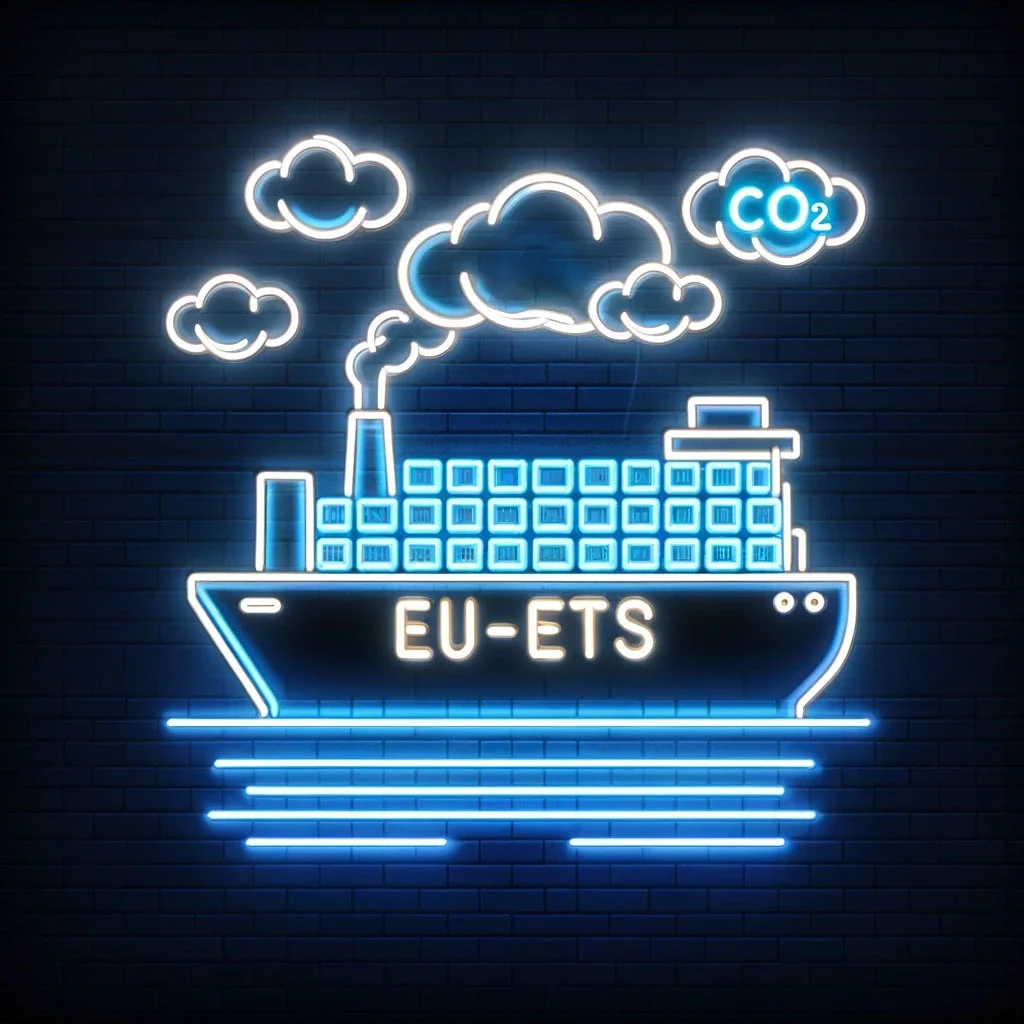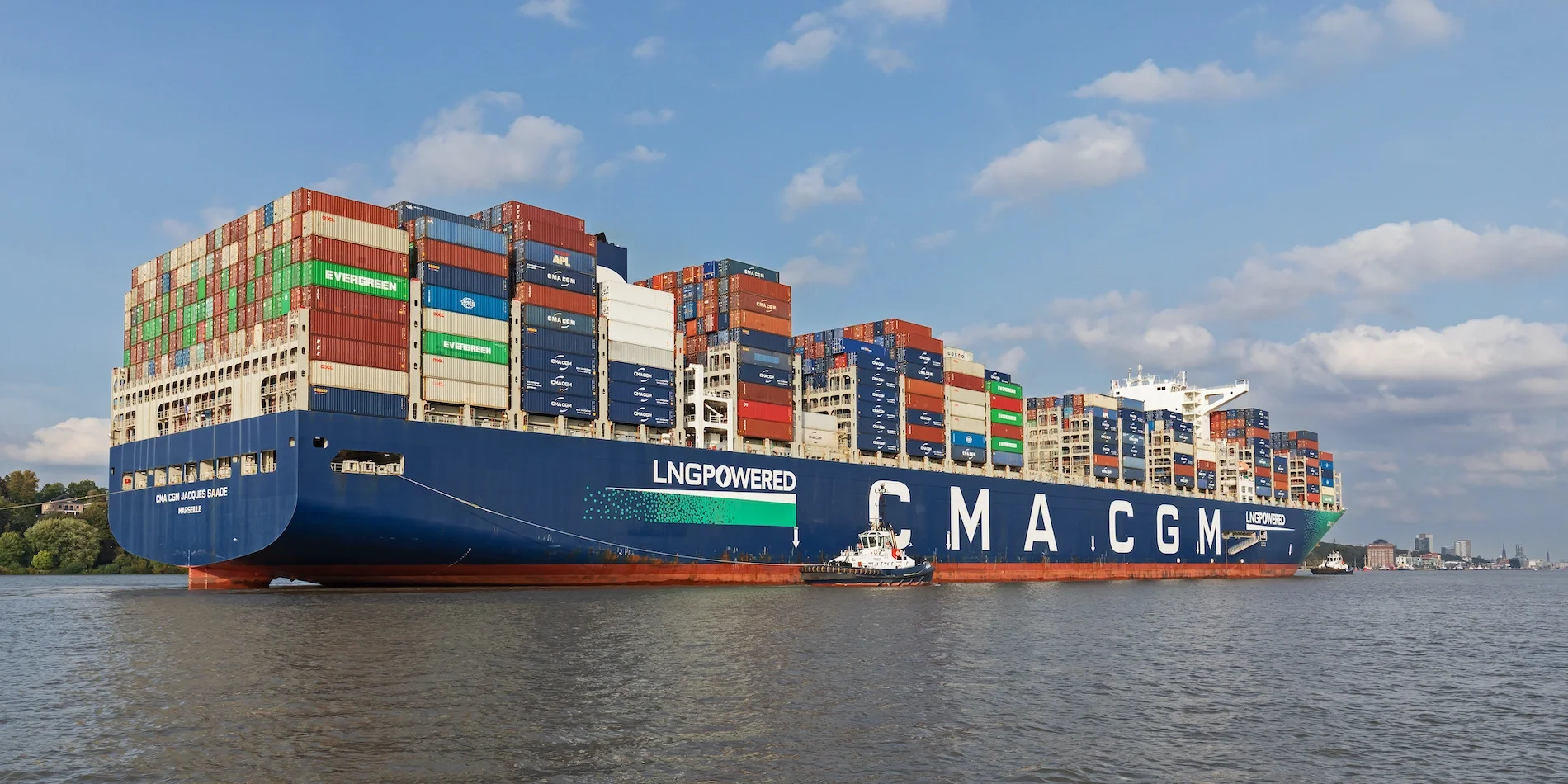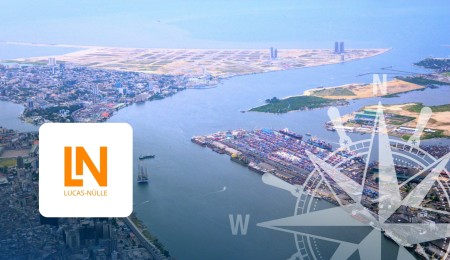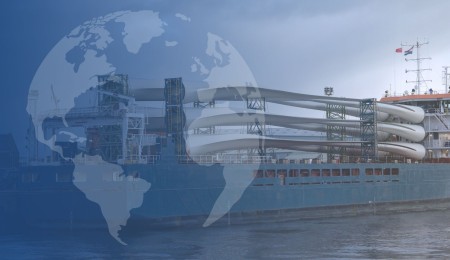
A balancing act between climate protection and economic stability
In and of itself, the EU Emissions Trading System is nothing new - after all, the EU Emissions Trading System was introduced back in May 2005. What is new is the extension of the EU ETS to maritime transport, which has long been subject to rather loose emissions regulations. For the European Union, international shipping, with a share of around 2.6 percent of global CO2 emissions, is one of many key factors in achieving the goals of the Paris Agreement: in order to reduce global warming to well below 2 degrees Celsius, ships, among other things, should emit 80 percent less CO2 by 2050.
The maritime industry therefore faces the dual challenge of reducing its carbon dioxide emissions while at the same time serving the ever-expanding global trade. It will have to reassess and strengthen its competitiveness in an increasingly sustainability-oriented global economy. One thing is certain: the EU ETS provides the regulatory framework, but the key to success is likely to lie in the innovative strength and flexibility of the shipping sector itself.
Its response to this regulatory call will therefore not only shape its environmental footprint, but also define its role in the future global economy. Integration into the ETS is forcing shipping companies and other maritime players to rethink their business models and develop strategies that ensure both environmental and economic sustainability. Innovations in the areas of emissions reduction, energy efficiency and alternative propulsion technologies are now particularly in demand.
Background: EU ETS and IMO - climate protection coordinated regionally and globally
In and of itself, the EU Emissions Trading System is nothing new - after all, the EU Emissions Trading System was introduced back in May 2005. What is new is the extension of the EU ETS to maritime transport, which has long been subject to rather loose emissions regulations. For the European Union, international shipping, with a share of around 2.6 percent of global CO2 emissions, is one of many key factors in achieving the goals of the Paris Agreement: in order to reduce global warming to well below 2 degrees Celsius, ships, among other things, should emit 80 percent less CO2 by 2050.
The maritime industry therefore faces the dual challenge of reducing its carbon dioxide emissions while at the same time serving the ever-expanding global trade. It will have to reassess and strengthen its competitiveness in an increasingly sustainability-oriented global economy. One thing is certain: the EU ETS provides the regulatory framework, but the key to success is likely to lie in the innovative strength and flexibility of the shipping sector itself.
Its response to this regulatory call will therefore not only shape its environmental footprint, but also define its role in the future global economy. Integration into the ETS is forcing shipping companies and other maritime players to rethink their business models and develop strategies that ensure both environmental and economic sustainability. Innovations in the areas of emissions reduction, energy efficiency and alternative propulsion technologies are now particularly in demand.
The EU ETS in maritime shipping from 2024: A new era in accountability
Since 2023, shipping companies have had an increased responsibility: they are obliged to develop and apply specific monitoring plans for each of their ships. These plans form the backbone for accurate and systematic monitoring of CO2 emissions, establishing a new norm in the maritime industry.
As we enter 2024, the maritime industry is entering a crucial phase of emissions monitoring. During this period, it will be necessary to collect emissions-related data from ships and consolidate it into specific emissions reports per ship. Shipping companies will need to invest more in robust data collection and reporting systems to ensure compliance while maintaining efficient operations.
A significant change from 2024 is the requirement that 100 percent of emissions from voyages within EU waters and 50 percent of emissions from voyages between EU and non-EU ports must be covered by emission allowances. This regulation will be implemented in stages, starting with 40 percent of CO2 emissions in 2024, rising to 70 percent in 2025 and finally 100 percent in 2026. All ships with a gross tonnage of 5,000 tons or more will be affected.

Revenue as investments in low-emission drive technologies
In Germany, the German Emissions Trading Authority at the Federal Environment Agency assumes the role of monitoring authority. The calculation of emissions is based on bunker consumption, with each tonne of fuel being offset against three tons of CO2. According to expert estimates, the EU emissions trading volume could increase by around 85 million tons of CO2 per year due to the maritime industry, which means an increase of almost 7%.
Ship owners or their ship management companies are responsible for registering and submitting emission allowances, while charterers or commercial operators bear the costs incurred. A special feature is the EU's provision for the shipowner to claim reimbursement of costs from the charterer.
A significant portion of the proceeds from emissions trading - estimated at between 1.6 and 1.8 billion euros, which corresponds to a good quarter of the total sum of 20 million tons of CO2 - will flow into an EU Innovation Fund. This is specifically intended to promote low-emission propulsion technologies in maritime shipping.
While the comprehensive inclusion of the shipping industry in the EU ETS from 2024 presents a challenge in terms of monitoring and compliance, it also offers a unique opportunity for the industry to take a pioneering role in the ecological transformation and make an active contribution to reducing global greenhouse gas emissions.
Die finanziellen Auswirkungen EU ETS
Rate surcharges abound in the sea freight fee landscape. Now, with the EU ETS, another financial burden is joining the ranks. As early as the third quarter of 2022, we received the first circulars from various shipping companies with information about the upcoming changes. At the time, it was still expected that emissions trading would come into force as early as 2023. However, even with the now later start in 2024, the maritime transport sector can expect significant cost increases - at least this is reflected in the publications from industry heavyweights such as Maersk and MSC.
Maersk puts the cost of pollution rights at 170 euros per FEU (Forty-Foot Equivalent Unit) in one direction and 99 euros per FEU in the opposite direction. When it comes to transportation from European North Range ports to the US East Coast, the company even quotes EUR 184 per FEU. In the case of reefer transports, the higher energy requirement for cooling the transported goods also results in higher CO2 emissions - and therefore higher costs. Maersk puts this at 276 euros per FEU for services from northern Europe to the east coast of the USA.
The world's largest carrier, MSC, charges EUR 83 per standard container (TEU) and EUR 248 per reefer container on the transatlantic route. Meanwhile, the charges on short-haul routes within Europe are quite high, as most of the routes are fully covered by emissions trading and smaller container ships are generally used than on the transatlantic route. This means that costs are twice as high on the route from Northern Europe to the Eastern Mediterranean, for example: MSC estimates 167 euros per TEU and 500 euros per reefer container.
Maersk and MSC have assumed a price of 90 euros per ton of CO2 for emission certificates in their calculations. According to estimates by analysts in a survey conducted by Reuters in November 2022, prices above EUR 90 per tonne of CO2 should be assumed.
Translated with DeepL.com (free version)
A significant influence on the overall cost structure
Although freight rates such as these are anything but inexpensive, they are by no means a special case. A price level like this at the beginning of 2022 - when there were still extreme bottlenecks in the supply chain as freight space and container capacities were scarce - would probably not have caused much surprise. At the time, the main issue was being able to transport goods by sea freight at all given the circumstances.
In the meantime, however, the picture has changed fundamentally, especially in trade from Asia to Europe - the problem of container shortages and lack of cargo space has eased. Spot market rates for Far East/Europe have fallen significantly from their former peak values of around USD 10,000 per FEU - even if the attacks by the Houthi rebels on shipping traffic in the Red Sea are currently causing prices to rise sharply again worldwide: as of January 2024, the Shanghai Containerized Freight Index (SCFI) is over 80% higher than in February 2023. In this context of market prices for freight, the cost of EU emission rights will undoubtedly have a noticeable and lasting impact on the overall cost structure.
There is much to suggest that the careful selection of shipping companies and the corresponding services offer a certain amount of leeway to influence cost increases - provided that they increasingly rely on low-emission propulsion systems: an innovative ultra-large container ship (ULCS) with a capacity of 19,000 TEU, equipped with state-of-the-art technologies to reduce emissions and with LNG propulsion, for example, offers considerable efficiency advantages compared to classic post-Panamax freighters with a capacity of 8,000 TEU that are operated with conventional fuels. This is where the potential for lower costs for pollution rights lies.
The EU ETS is therefore prompting both shipping companies and their customers to make operational adjustments that inevitably affect financial aspects, but also go beyond this. For example, adjustments to strategic decisions regarding fleet composition, route planning and investments in green technologies will be necessary in order to meet the requirements of the EU ETS and remain competitive at the same time.
Conclusion: Harmonizing future strategies with customer interests
With the introduction of the EU Emissions Trading System (ETS) and the growing focus on CO2 reduction, the focus of a modern sea freight forwarder is all the more on the needs and expectations of its customers. Our approach is to both respond to the new challenges and actively design ways to offer our customers optimal solutions.
The EU ETS brings significant changes to the logistics industry and we understand that these developments can also raise many questions for our customers. Therefore, our priority is to inform you transparently about the implications of these new regulations and to provide you with the best possible decision-making tools and options to meet the increased demands for sustainability and efficiency.
This includes working with our shipping and service partners to identify the most efficient and environmentally friendly transportation solutions. At the same time, we support our customers in an advisory capacity in order to jointly develop transport strategies that are both economical and environmentally sustainable. We recognize that the coming years will be a time of transition and adaptation. As your sea freight forwarder, we are committed to making this transition as flexible and advantageous as possible.






